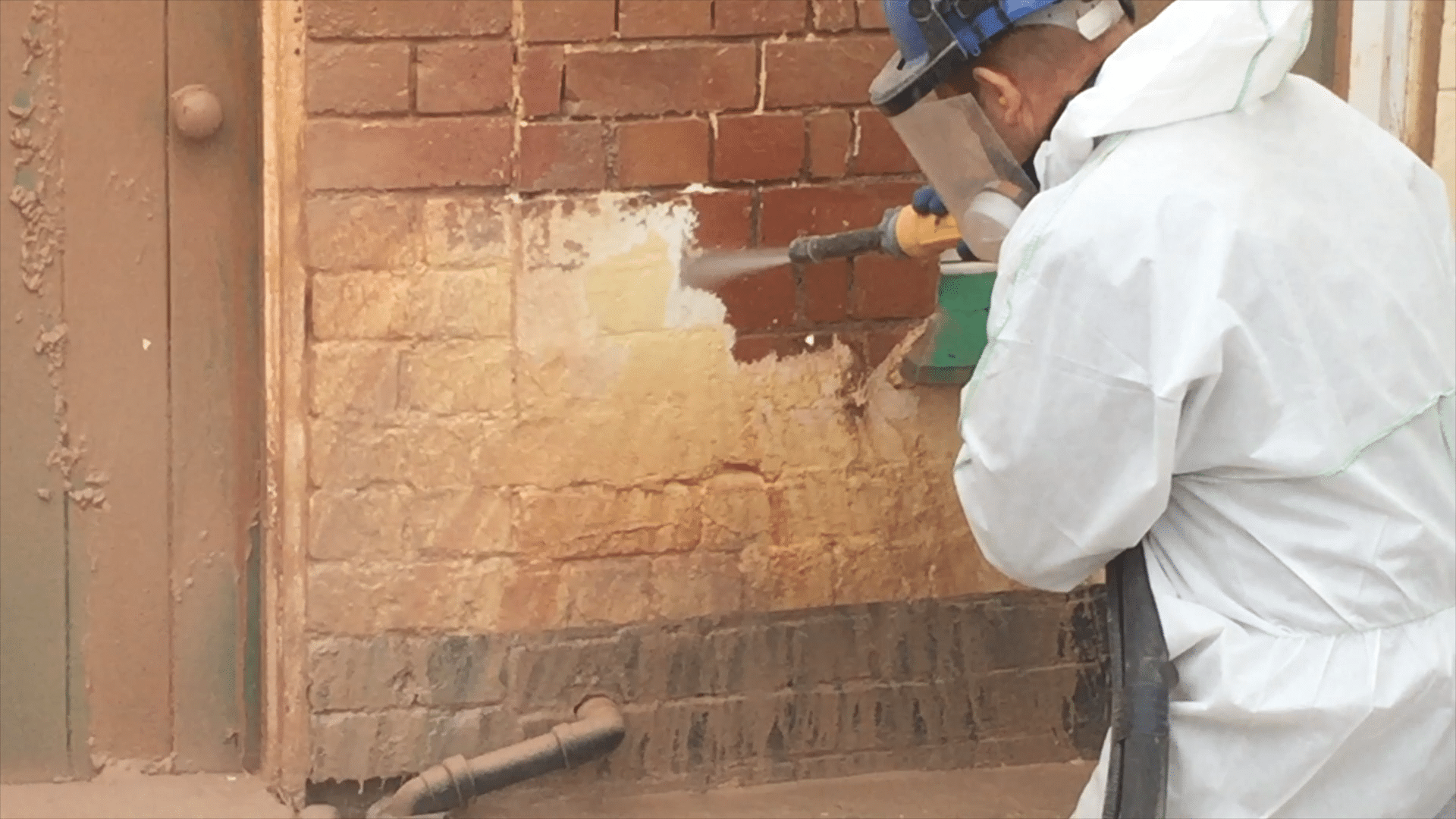When preparing a surface for cleaning, restoration or coating, choosing the right sand blasting method can make a major difference in quality, efficiency and safety. You may have come across terms such as dry blasting, wet blasting, abrasive blasting, vapour blasting and dustless blasting – but what do they mean, and how do they compare?
Below you’ll find a practical guide to blasting methods and how the Quill Falcon Cyclone, Supa-Dri and Switch systems compare.
What is wet abrasive blasting?
Wet abrasive blasting, also known as wet blasting, slurry blasting, liquid honing or vapour blasting, uses a combination of water, abrasive blast media and compressed air to remove a range of coatings, corrosion and residues.
The majority of wet abrasive blasting systems use blast media which only joins with the water at the nozzle, allowing some blast media to exit the nozzle without water. The blast media hits the blast surface and can cause sparks, which can have catastrophic consequences if used in flammable areas or structures such as oil rigs and gas terminals. In addition, the grit will embed in the surface, leaving it uneven and unclean, thereby affecting the longevity of future coatings. In short, these systems are often inefficient, ineffective and offer little control.
The Quill Falcon Cyclone System is different. It combines water, abrasive media and air within the machine using a patented method that prevents sparking and ensures maximum efficiency. Operators can adjust the water, air and media ratios in real-time, giving total control over the blast, leaving surfaces profiled, contaminant-free and ready for coating.
Read our case study about how the Quill Falcon Cyclone 120 was used to remove layers of coating from the GV Independent, which operates as a guard ship in the North Sea.
What is dry blasting?
Dry blasting, sometimes called sand blasting, grit blasting, or abrasive blasting, is a surface preparation technique which involves using compressed air to force abrasive media (like garnet or aluminium oxide) through a blast hose at high pressure. It’s widely used for aggressive surface prep on metal, masonry or concrete.
However, large amounts of heat and friction are generated, causing the blast media to explode on impact with the blasting surface. While effective, it can cause large clouds of abrasive dust to form in the atmosphere. This dust can make visibility extremely poor in workplace environments and in some cases, stops other work being carried out on site. It can also lead to media embedding in the surface and even warp thin metal substrates.
Even so, dry blasting remains popular, especially for projects and environments where the use of water is prohibited, such as preparing bridges for repainting. That’s why we developed the Quill Falcon Supa-Dri dry blasting system, which offers precise control, thanks to its pneumatically controlled main air valve (with a cylinder, not a diaphragm), exhaust valve and abrasive metering valve, which work together to deliver a smooth, reliable operation. The pre-set metering valve ensures the optimal amount of abrasive is released – which retains its setting even after decompression.
Read about the latest addition to the Quill Falcon blasting range here.
How does dustless blasting work?
Dustless blasting is a term often used interchangeably with wet abrasive blasting. It refers to blasting methods that significantly reduce airborne particles during surface preparation. By introducing water into the system, dustless blasting minimises the release of particles in the air, making it a cleaner and safer option, especially within enclosed environments.
At Quill Falcon, dustless blasting is taken to the next level in the form of our specialised Cyclone system, which is uniquely designed to give operators precise control over a range of blasting projects.
What makes the Quill Falcon Cyclone System different?
The Quill Falcon Cyclone combines water, blast media and air in a unique patented method that prevents any sparks from being created and ensures the best, most efficient use of the air, water and blast media possible.
Due to the unique patented design, it allows operatives to increase or decrease the amount of water, blast media and air to give greater control and precision over the entire blast process.
Unlike traditional wet blasting systems, the Quill Falcon System rapidly removes coatings, corrosion and residues, leaving surfaces profiled, contaminant-free and cleaned in seconds, allowing future applied coatings to stick better for longer.
Other key benefits include:
- No abrasive embedment: leaves surfaces clean, profiled and contaminant-free
- Minimised blast media use: cuts costs and environmental waste
- Meets high surface preparation standards SA 2½, HB 2½, SB 2½, NACE VIS 9 and WAB 6/10
The Quill Falcon Cyclone is trusted by contractors across a wide range of industries. See how it performs in real-world conditions in our project case studies.
Should you use wet or dry blasting for your project?
There’s no one-size-fits-all answer. Each blasting method has its place and the right choice depends on your specific application.
For heavy-duty removal in open industrial settings, dry blasting may be the better fit. But when surface finish, dust control or nearby trades are concerns, wet abrasive blasting offers a cleaner, more adaptable solution.
Whatever is needed for a job, the Quill Falcon Cyclone System offers all the advantages of wet blasting with added control, efficiency and surface quality, giving you the best possible result with less mess and greater reliability.
If your projects demand the flexibility of both methods, the Quill Falcon Switch is a smart alternative. It transitions seamlessly from dry to wet blasting at the flick of a lever, with no need to stop to empty or refill the vessel. Switch to dry blasting when speed is a priority and switch to wet dustless blasting when other trades need to continue on site in close proximity and plant shutdown is not an option.
What’s the verdict?
Understanding the difference between wet and dry blasting methods helps you choose the most efficient and appropriate technique for your project. Whether you’re restoring heritage buildings, cleaning industrial equipment, or preparing surfaces in safety-critical environments, selecting a method that balances safety, performance, cleanliness and environmental responsibility is key.
Want to learn more about how Quill Falcon can support your next project? Get in touch with our team or visit our dustless blasting applications page to find out more.

